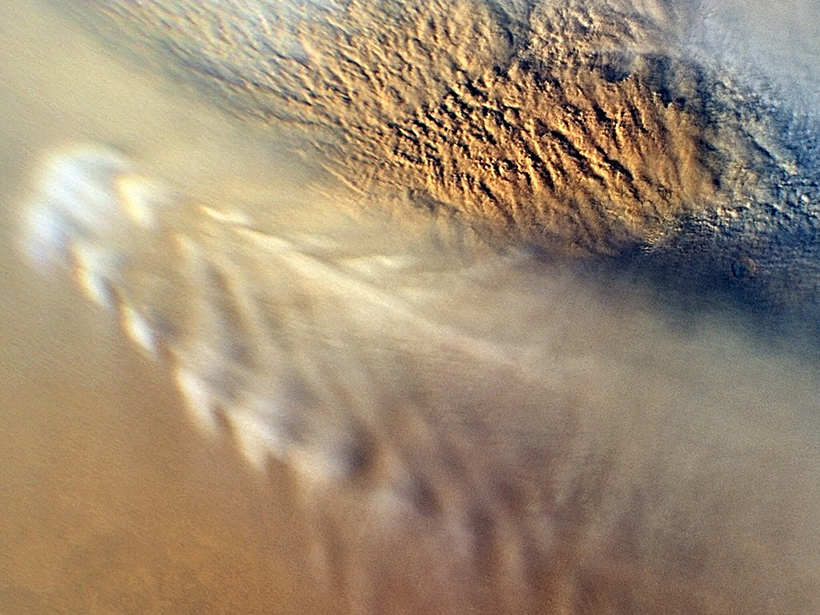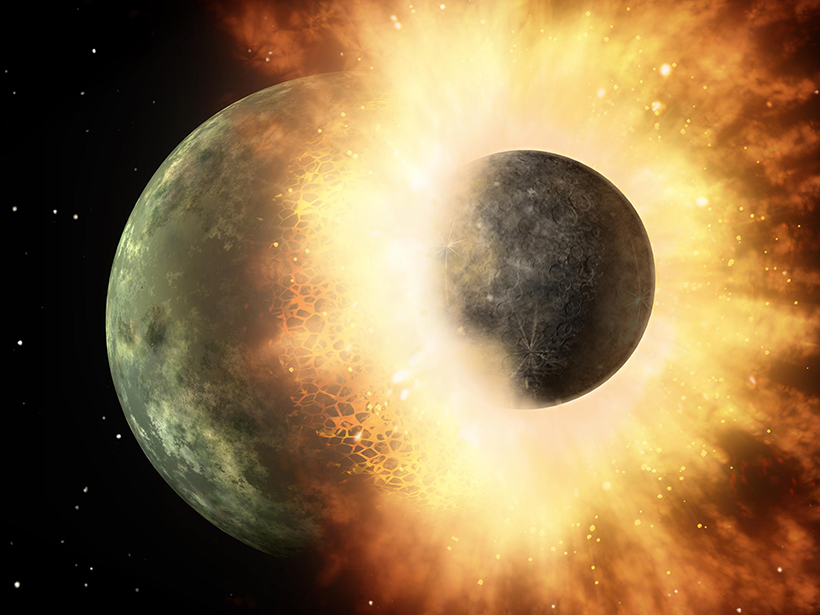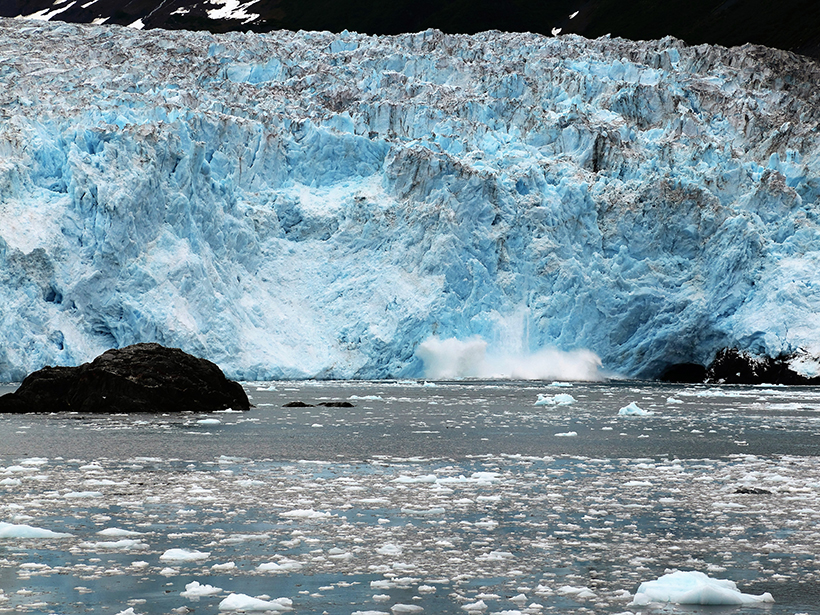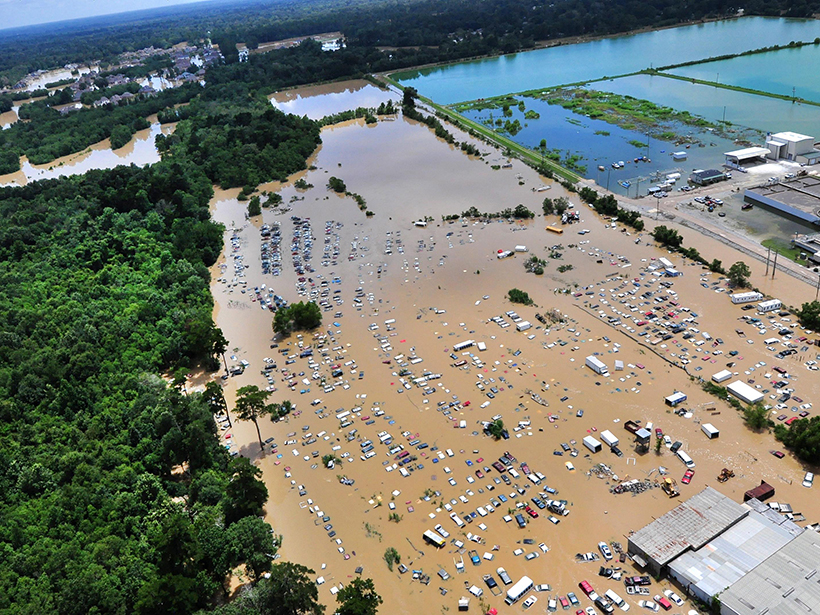Mars is even more like Earth than we thought, according to a statistical analysis of the planet's swirling atmosphere.
Research Spotlights
Research spotlights are plain-language summaries of recent articles published in AGU’s suite of 24 journals.
New Insight into Silica Explains Planetary Smashup
A better equation of state for silica will help planetary scientists accurately constrain the giant impacts that have shaped our solar system.
Gulf Stream Destabilization Point Is on the Move
Westward migration of the wavelike Gulf Stream pattern could have big effects on ocean mixing and heat transport off the U.S. East Coast.
A New Model to Improve Gravity Models
Data from the Gravity Recovery and Climate Experiment (GRACE) mission gets a new and improved look.
Modeling Rainfall Runoff
New framework unifies existing models for better analysis of the flowing water produced by heavy rain events.
Groundwater: A Hidden Influence on River Shape
A new study shows how groundwater influences river dynamics and channel pattern.
Ancient Ocean Floor Seashells Improve Model of Past Glaciers
More accurate reconstruction of ice sheets over the past 150,000 years could help scientists predict future climate change.
High-Resolution Ocean Model Captures Large-Scale Heat Transport
A lower-resolution model is sufficient to capture air-sea interactions, but a high-resolution model better simulates average sea surface temperatures in the North Atlantic.
Clouds in Climate Models of a Simulated Water-Covered Earth
Researchers use aquaplanet experiments to zero in on the effects of small-scale processes in the tropics that cause discrepancies between climate models.
Corals Reveal Ancient Ocean Temperatures in Great Barrier Reef
Old coral colonies suggest that a prehistoric warming event called the mid-Holocene Thermal Maximum may have occurred earlier than previously thought.









